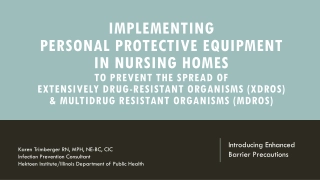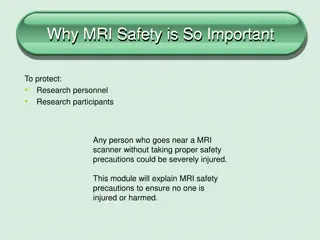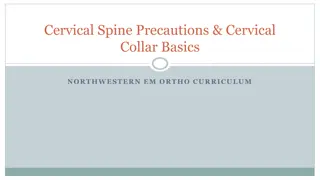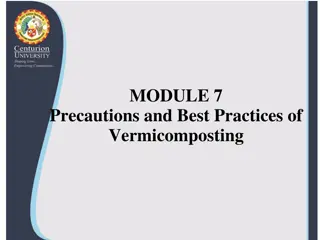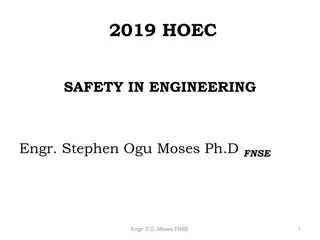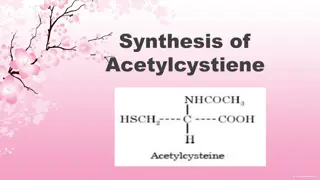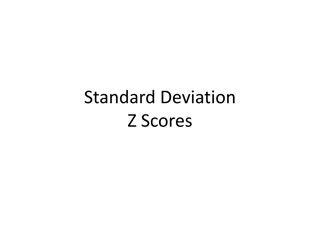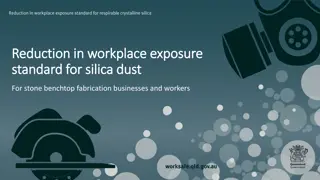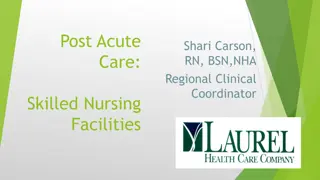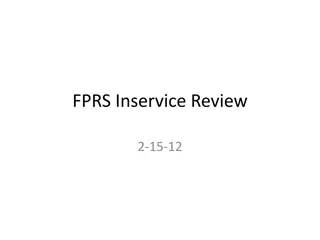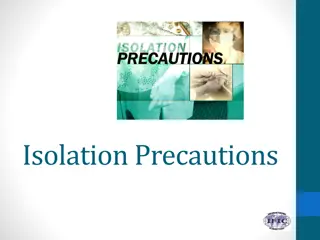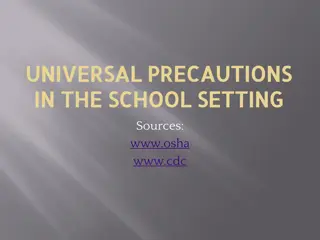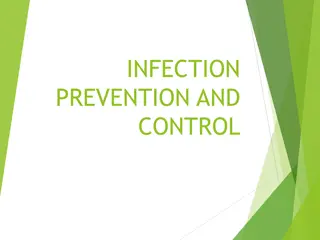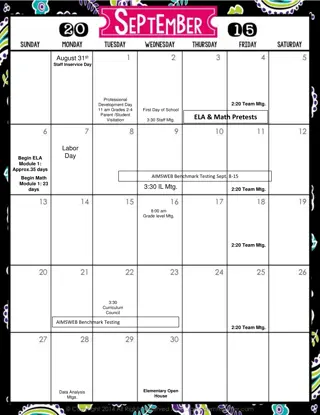
Understanding Standard Precautions for School Health
Learn about the importance of Standard Precautions in schools to prevent the spread of infectious diseases among students and staff. Explore topics like hand hygiene, respiratory etiquette, PPE usage, and cleaning practices. Discover ways to promote good hand hygiene and create a safe and healthy environment in educational settings.
Download Presentation

Please find below an Image/Link to download the presentation.
The content on the website is provided AS IS for your information and personal use only. It may not be sold, licensed, or shared on other websites without obtaining consent from the author. If you encounter any issues during the download, it is possible that the publisher has removed the file from their server.
You are allowed to download the files provided on this website for personal or commercial use, subject to the condition that they are used lawfully. All files are the property of their respective owners.
The content on the website is provided AS IS for your information and personal use only. It may not be sold, licensed, or shared on other websites without obtaining consent from the author.
E N D
Presentation Transcript
EY Helix: Data Extraction Utility Standard Precautions In-Service Session
EY Helix: Data Extraction Utility What are Standard Precautions? Standard Precautions are These precautions help keep everyone healthy by stopping the spread of germs. basic safety steps everyone should follow to avoid getting sick or spreading germs.
EY Helix: Data Extraction Utility What are they? Hand hygiene Respiratory etiquette Personal protective equipment (PPE) Cleaning and disinfection Safe injection practices Why do they matter? Standard Precautions: Are critical for maintaining a safe and healthy environment. Help to prevent the spread of infections. Potentially reduce absenteeism. Protect the health of staff, teachers, and students.
EY Helix: Data Extraction Utility Standard Precautions Standard Precautions in schools refers to infection control measures to prevent the spread of infectious diseases among students, teachers, and staff. Personal Protection Equipment (PPE) Hand Hygiene Respiratory Etiquette Cleaning and Disinfection Promoting washing hands and using hand sanitizer to prevent the spread of germs. Promoting covering coughs and sneezes and washing hands or using hand sanitizer afterward. Wearing PPE to protect you and others from illness or injury. Cleaning and disinfecting surfaces to remove dirt and germs that cause infection.
EY Helix: Data Extraction Utility Hand Hygiene
EY Helix: Data Extraction Utility Promote hand hygiene During school, encourage regular handwashing with soap and water for at least 20 seconds: After coughing, sneezing, or blowing noses. After touching animals or their cages. After using the bathroom. Before and after eating meals or snacks. When hands are dirty or soiled. Reminder: Use hand sanitizer with at least 60% alcohol when soap and water isn t readily available.
EY Helix: Data Extraction Utility Keeping our schools safe and healthy Discussion: Hand hygiene What are some ways that we can further support good hand hygiene at school? Do you have any feedback or suggestions for improving hand hygiene practices in our school? How can we educate about and promote hand hygiene in our school? What are possible barriers of good hand hygiene? What are ways to overcome those obstacles? How do you believe teachers and staff can serve as role models for students when it comes to hand hygiene? How can we increase adoption of handwashing or use of hand sanitizer with students during school hours and at home?
EY Helix: Data Extraction Utility Respiratory Etiquette
EY Helix: Data Extraction Utility Promote respiratory etiquette 3 steps to cover your coughs and sneezes Cover your nose or mouth with a tissue or your elbow. Throw your tissue in the trash. Wash your hands or use hand sanitizer.
EY Helix: Data Extraction Utility Keeping our schools safe and healthy Discussion: Respiratory etiquette What are some ways that we can further support good respiratory etiquette in our school? Do you have any feedback or suggestions for improving respiratory etiquette practices in our school? How can we educate about and promote respiratory etiquette in our school? What are possible barriers of good respiratory etiquette ? What are ways to overcome those obstacles? How do you believe teachers and staff can serve as role models for students when it comes to respiratory etiquette? How can we increase adoption of respiratory etiquette or use of hand sanitizer for our school and students?
EY Helix: Data Extraction Utility Personal Protective Equipment (PPE)
EY Helix: Data Extraction Utility Promote PPE Masks Gloves Gowns Protective Glasses Protects nose and mouth Protects hands from Protect eyes from Protect your skin from germs or chemicals exposure to body fluids or contact with germs, and clothing from in the air. from contact with body fluids , germs and hazards in contaminated items and chemicals. splashes. or surfaces.
EY Helix: Data Extraction Utility When staff should wear PPE Masks Gloves Eye Protection Gowns Respiratory Illness Wear when you re coughing and sneezing or around others who are coughing and sneezing due to an infectious illness. Wear when there is an outbreak of a respiratory illness. The school or another authority may require masks. Cleaning and Disinfecting Wear when cleaning labels recommend wearing a mask to protect yourself from harmful chemicals. First Aid Wear when providing first aid or when you expect contact with another person s: Non-intact skin Mouth Nose Blood Body fluid Cleaning and Disinfecting Wear when using a cleaning and disinfecting product as recommended by the product label. Food Service Wear when you re involved with preparing or serving food. First Aid Wear when you think blood, body fluids, germs, or harmful substances may get into your eyes, such as when you are caring for others or cleaning. Cleaning and Disinfecting Wear when diluting a cleaning or disinfecting product. Wear when using a cleaning and disinfecting product as recommended by the product label. Personal eyeglasses are not considered eye protection. First Aid Wear when there is a risk of exposure to body fluids or splashes.
EY Helix: Data Extraction Utility Keeping our schools safe and healthy Discussion: PPE What are some ways that we can further support wearing PPE in our school? How can we educate about and promote PPE in our school? What are possible barriers of good PPE practices? What are ways to overcome those obstacles? How do you believe teachers and staff can serve as role models for students when it comes to PPE? How can we increase adoption of PPE for our school and students?
EY Helix: Data Extraction Utility Cleaning and Disinfecting
EY Helix: Data Extraction Utility Germs can live on things we touch every day.
EY Helix: Data Extraction Utility Keeping our schools safe and healthy Discussion: Cleaning and Disinfecting 1. What challenges do you face implementing cleaning and disinfecting practices? Example: time, resources, or materials. How could we overcome those obstacles? 2. How do staff members collaborate with the custodial team to ensure consistent cleaning practices across different areas of the school? 3. What are some ways that staff and teachers can support the custodial team in keeping our school clean? 4. How are frequently-touched surfaces, such as doorknobs, desks, chairs, keyboards addressed in cleaning routines? 5. How does our school adapt its cleaning protocols in response to outbreaks of illness or unexpected cleanliness issues? 6. What communication procedures are in place to address identified issues or areas for improvement?
EY Helix: Data Extraction Utility Summary Adhering to Standard Precautions is important to maintaining a healthy learning environment for our school. Standard precaution practices include proper hand hygiene, respiratory etiquette, using appropriate PPE, and cleaning and disinfection. When used appropriately Standard Precautions significantly reduce the risk of spreading infectious diseases in our schools.
EY Helix: Data Extraction Utility Your feedback 1 2 3 4 5 6 7 8 9 10


